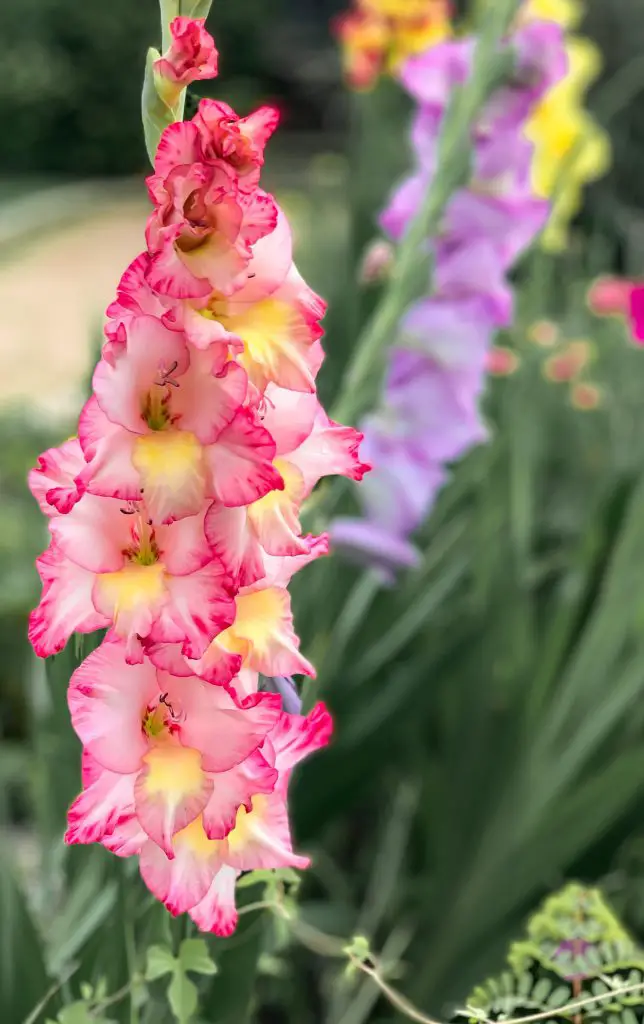Are Foxgloves Poisonous? Foxgloves are a favorite cottage plant among gardeners because of their beautiful flower spikes which can reach up to 6ft tall. But are they safe to touch? Will they harm me or my pets?
Foxgloves are extremely poisonous and should be handled with care, irrespective of whether the plant is alive or dead as the plant is poisonous in both fresh and dried forms. The most common way for the toxins to enter the body is if the plant is ingested however they can also be absorbed through the skin. The toxins are potentially fatal to humans and also other mammals such as your cat or dog.
It is generally recommended that anytime foxgloves are handled that gloves are used. While consumption is far more dangerous, contact through the skin can also result in irritation of the skin, or in extreme cases, some people can experience severe allergic reactions.
However, the risk of poisoning can increase if you have an open wound such as a cut or if the toxin is inadvertently transferred to your eyes by accidentally rubbing them. As such it is advisable to use disposable gloves rather than regular garden gloves.

What Effects Does Foxglove Have On You?
Foxgloves have several poisonous chemicals that include Deslanoside, Digitoxin, and Digitalis glycoside. These reside in the flowers, leaves, stems, and seeds of the plant. Common symptoms associated with exposure to foxgloves, according to Mountain Sinai include an irregular or slow heartbeat, low blood pressure, and collapse.
However, if the degree of exposure is reduced or over a long period of time the symptoms can be less severe and can include hallucinations, loss of appetite, blurred vision, stomach pain, vomiting, nausea, or diarrhea.
In the event that you suspect someone has been poisoned seek immediate medical help, and if at all possible identify the time the plant was ingested and the amount, the person’s weight, age, and condition.
Alternatives To Foxgloves In The Garden
There is no denying that foxgloves are a beautiful addition to the garden, however, if to have animals around your house or young children that could potential get into the garden beds where the plant is grown it may be a plant you want to avoid. So what is an alternative plant that looks similar and could be used as a replacement?
Hollyhocks
One of the alternatives to foxgloves is hollyhocks, which are a biennial plant, like the foxglove that also produces a flowering spike that can reach up to 9 feet tall. Biennial means that the plant is grown from seed in the first season but only produces a flower in the second year before dying off.
However, it will self-seed readily which means that the plants will return year after year. They produce flowers in a range of colors which include red, pink, yellow, purple, and white that are typically 3 to 4 inches wide.
Like foxgloves, hollyhocks prefer a sunny location that has rich, moist but relatively free-draining soil. The spires produced may require support in windy conditions therefore it is best to plant them in a sheltered location to minimize the need for supports.
Hollyhocks are generally considered non-toxic plants however they can still cause dermatitis in people and pets when direct contact is made. But the consequences of this are nowhere as severe as foxgloves.

Gladiola
Gladiola is an alternative that may also be considered for the garden. Unlike the foxglove and hollyhock, it is a summer-flowering bulb that produces flower spikes that are 6 to 7 feet tall. They come in a range of colors which include red, white, and pink.
Typically that bulb is planted in spring every year in a frost-free environment. The bulbs need to be lifted in autumn and stored for the winter, before being replanted the following spring.
In terms of toxicity, gladiola is non-toxic to humans but can affect cats and dogs if the plant is ingested, according to gardeners world. The plant will cause your pet to experience vomiting, lethargy, and diarrhea. But the effects are not as severe as foxgloves.

Lupines
Lupines are another alternative to foxgloves that produces flower spikes, though they are generally not as tall as foxgloves only reaching a height of 1 to 5 ft depending upon the particular variety selected. They come in a variety of colors which include blue, purple, yellow, pink or white.
However, the plants are somewhat toxic to animals and humans however, the quantities that need to be consumed are quite large to cause significant problems so overall it is a safer option than foxgloves.

Other Comments
The other obvious choice to replace foxgloves is delphiniums which are often mistaken for foxgloves. This plant is generally not recommended as a replacement because the toxicity of the plant is significant.
The plant can cause severe digestive issues if consumed by humans and severe skin irritation if touched. Additionally, insteading.com highlighted that wild varieties of delphinium have been known to kill cattle, as such it is not recommended as a replacement.
